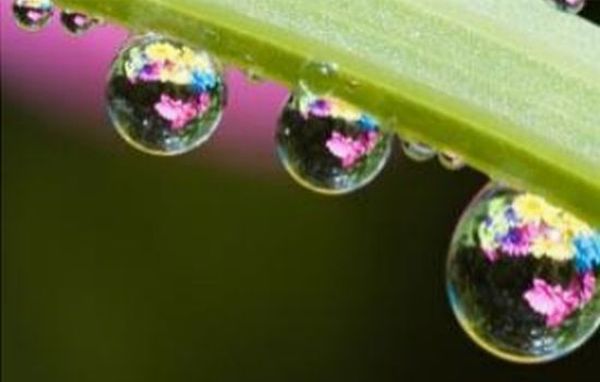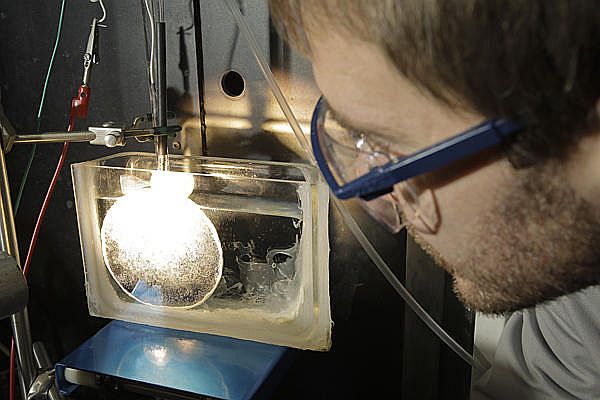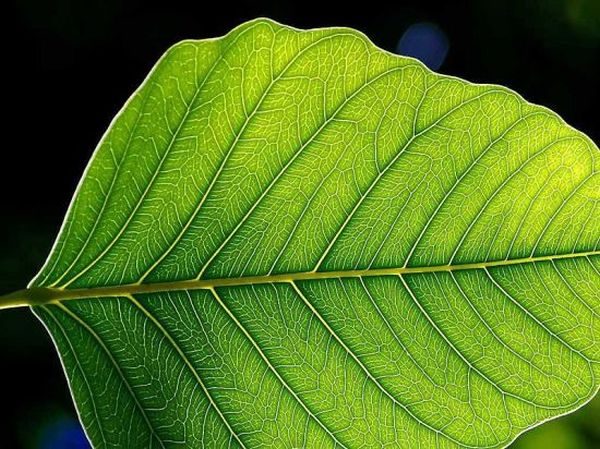
Artificial photosynthesis replicates the natural photosynthesis process for producing electricity. The natural process involves two critical steps or half reactions. First is the oxidation of water molecules to produce oxygen and protons (hydrogen). And the second step involves the reaction of oxygen with carbon dioxide to form glucose.
With little success, the researchers are trying to achieve both the steps separately with the help of artificial catalysts. The hydrogen produced in the first step could then be used in the fuel cells, converted directly in liquid fuel or reacted with carbon molecules for producing hydrocarbons with similar molecular structures like many petroleum products.
What difference will it make?
The artificial photosynthesis can revolutionize the energy situation. It would allow for the production of unlimited amount of green energy for powering many development projects of the world. Not only this, it would consume most of the carbon emissions and halt the changing climate patterns which is a direct result of excessive carbon emissions.
The possibilities
1. Artificial photosynthesis: Turning sunlight into liquid fuels moves a step closer

Breaking up of water molecules is one of the critical step of the natural photosynthesis process. Researchers at the Lawrence Berkeley National Laboratory have now shown that this can also be done artificially with the help of nano-sized cobalt oxide as catalyst. With this they have claimed that artificial photosynthesis could be easily carried out in future. The hydrogen produced from the oxidation of water could be used to convert the CO2 molecules into fuel.
2. Synthetic leaves generate electricity by artificial photosynthesis

A team of scientists from MIT, University of California and University of Michigan have claimed that synthetic leaves made up of glass wafers with small water-filled networks can produce electricity through the process of photosynthesis. For this they have artificially developed a plant like system. The synthetic leaves get water from the main stem which has metal plates connected to the electric circuits attached to a wall. Water moves through the pores to the edges and evaporates.
The charged metal plates of the main stem and water network form two conducting layers in the system. Both are separated by an insulated layer. A small amount of charge is produced because of the difference of the electrical properties of air and water. This allows the system to produce about 2 micro watt electricity per cubic centimeter. Though this amount is extremely small, it might be possible to exploit this system for producing green energy after some more technological innovations.
Trends
1. Artificial photosynthetic process could run your house on a bottle of water

Dan Nocera, a chemist at the Massachusetts Institute of Technology (MIT), has shown that the adequate electricity for a household could be produced from single bottle of water and sunlight. This could be done with the process of artificial photosynthesis. For this, Nocera has developed a special catalyst to split water into its constituents. Unlike the natural photosynthesis, this process produces free hydrogen atoms through the reaction of carbon dioxide and water molecules in the presence of sunlight. The free hydrogen could then be used in a fuel cell or converted directly in to liquid fuel. It has been claimed that this process can about 30 kilowatt of electricity from a single water bottle in four hours.
2. Artificial photosynthesis to power future jets

Nathan Lewis, a chemist at the California Institute of Technology in Pasadena, has developed new photovoltaic cells that can enable artificial photosynthesis many times faster than most of the crops. This invention can directly convert sunlight into fuel instead of energy for propelling aircraft jets. It splits the water molecules to generate hydrogen gas. However, there is a limitation as the complete process would require the formation of hydrocarbon molecules with similar structure like the molecules of diesel or aviation turbine fuel by combining hydrogen and CO2. At present, no commercial process is in application for doing this. Lewis believes that this could be done in the course of next 4-5 years.
3. Carbon Nanotubes make artificial photosynthesis a reality

Scientists at the Hebei Normal University of Science and Technology in China have shown that carbon nanotubes could be used to mimic a key of step of the photosynthesis process. Thus making the possibility of artificial photosynthesis a reality.
Photosynthesis reaction takes place naturally in plants and involves multiple electron systems for providing necessary energy for the process. For making artificial photosynthesis a reality, multiple electron systems need to be replicated artificially. The Chinese scientists have done so by substituting electron receiver molecules in photosynthesis process with single-walled carbon nanotubes. It has been claimed that carbon-nanotubes could be coated on walls of houses in future for achieving mass-scale artificial photosynthesis and consumption of atmospheric carbon emissions.




